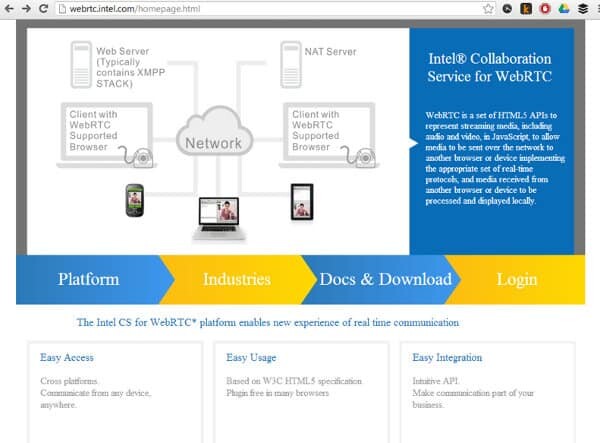The ARM race is on, but the leading horse may be… Intel?
One of the complaints about WebRTC is its support of VP8 instead of H.264, and one of the reasoning here is the lack of chipset vendors support for VP8 and hardware acceleration availability.
There were some rumors of possible support of Samsung chipsets of VP8. Then there’s the Rockchip one. Nvidia has something in the works. So we’ve got ourselves “covered” by most ARM chips. That if you ignore the 2 giants in this space: Qualcomm and Apple.
Apple has no incentive to support VP8 or VP9 or WebRTC for that matter.
And Qualcomm? Not sure about them.
The interesting news to me comes from another front though – from Intel. They just launched (quietly) a website around WebRTC: http://webrtc.intel.com/
And instead of chipsets and acceleration and optimization it seems like yet-another-cloud-API-service.

Hmm… not what I would have expected from Intel. I had more of a feeling they’d go for optimization of their mobile chips and later on their ultrabook ones. The fact that they have taken it further into APIs looks either like an interest hobby inside Intel’s main domain (=weird) or a willingness and understanding that software rules when it comes to hardware companies these days.
So if Intel, Samsung, Nvidia and even the low end suppliers like Rockchip has plans for WebRTC… where does that leave Qualcomm?
–
The happy news here? Another company just got into my list of vendors (190 strong now, and we’re still half way through 2013).

Hi Tsahi
Thanks for another valuable information and your sharp market watch.
I took a look at the intel WebRTC site, it’s full of mistakes and some dead links 🙂
But interesting to learn about their approach, it’s just a footprint that I will certainly follow up in the next weeks and months.
Luis,
You are correct. My point is that it is a sign that a chipset vendor is looking at this technology rather closely and to some extent has committed itself to it.
Tsahi – I think it’s wrong to think of either Intel or Qualcomm as purely “chipset vendors”.
Intel has recently acquired Aepona (which does telco API platforms) and has a big push around SDN/NFV
Qualcomm has long had a variety of software & Internet services businesses, including various forms of VoIP. Ages ago, it acquired iSkoot, which did some of the early telco/Skype integration, for example.
That said, I’d also expect both to take an interest in WebRTC, but probably as another part of accelerating/enhancing HTML5 support more generally. It makes more sense to prioritise WebGL for 3G graphics/gaming first, I’d say – it’s more mature and will drive more processor cycles I’d imagine. VP8/9 will probably come a bit further down the line.
Generally, nothing gets absorbed & integrated into chipsets until it’s an *obvious* winner with massmarket potential, because of the timelines and development costs involved, as well as the opportunity costs of “not doing something else” with scarce resources & silicon footprint.
While both aren’t pure chipset vendors, that is their main focus and business. Whatever they do around it is targeted at selling more chipsets. Other than that, I agree with your analysis that WebGL is more important that WebRTC on the chipset level.